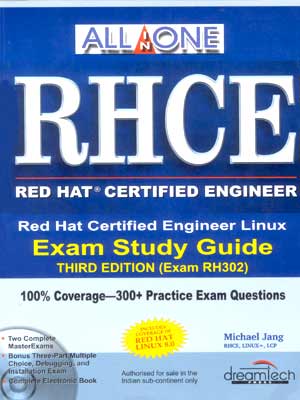| |
 |
| |
LINUX |
| |
| ~ |
Basics of Linux - RH-302 (Basic) - Redhat Linux Fundamental |
| ~ |
Linux System Administration-RH-253/300-Redhat Linux Fundamental |
| ~ |
Linux Network Administration-RH-253/300-Redhat Linux Fundamental |
| |
|
| |
|
| |
|
| |
| Basics of Linux (2 Days - 16 Hours) (Level I) |
| |
~
~
~
~
~
~
~
~
~
~
~
~ |
Introduction to Red Hat Linux
Getting Started
Login in Linux (GUI & Console)
Directory Structure of Linux
Listing Files & Directories (ls)
Creating, Moving & Deleting Files and Directories
Searching for Files (locate & find)
Shells (Working effectively in the Command Line)
File System Basics & File Management
Pipes, Streams & Redirects
Processes Management
Finally the vi Editor |
| |
| Course Audience: |
| |
| The course is intended for those who want to learn the very basics of Linux Operating System or those who want to go for System and Network Administration and don't have any prior experience on Linux |
| |
| Linux System Administration (3 Days - 24 Hours) (Level II) |
| |
|
~
~
~
~
~
~
~
~
~
~
~
~
~
~
~ |
Overview of System Administration
Installation of Linux
Command-line Interface
User and Group Management
File and Directory Basics
Device & Disk Management (Adding a New Disk, Creating Slices, formatting disks with ext3/ext2 FS)
Filesystem Management (e2fsck and other utilities)
System Startup and Shutdown
Boot Processes
Creating a Startup Shell Script
Package Management (Using Kpackage and rpm commands)
Process Management
Printer Administration
Backup Administration |
| |
| Course Audience: |
| |
| The course is intended for those who want to learn, pursue a job as System Administrator and Covers all aspects of System Administration. |
| |
| Linux Network Administration (Approx 40 Hours) (Level III) |
| |
~
~
~
~
~
~
~
~
~
~
~
~
~ |
Networking Basics
Protocols (TCP/IP)
Configuring Ethernet Interface & TCP/IP
Networking Utilities & Remote Management
NFS (Sharing Directories on Linux)
PPP Configuration
DHCP Configuration & Management
Name service and resolver configuration
DNS Configuration & Management
Apache Web Server Configuration & Management
FTP Configuration
SAMBA (Integrating Linux in Windows Environment)
Linux System Security |
| |
| Linux Optional Modules |
| |
~
~
~
~
~
~
~
~
|
AutoFS
NIS (Network Information Service)
Linux kernel (Fundamentals, building, installing, patching)
Modules (Listing, Adding and Removing Modules)
Firewalls
Squid Configuration
IP Masquerading
Sendmail (Configuring a Mail Server) |
| |
| Examination Description RH - 302 |
| |
The certification exam consists of three parts conducted in a single day. Two of the three sections of the exam are performance-based, meaning that candidates must perform tasks on a live system, rather than answering questions about how one might perform those tasks.
The RHCE Exam consists of three sections:
Section I: Troubleshooting (2.5 hours)
Section II: Multiple Choice (1.0 hour), and
Section III: Installation and Configuration (2.5 hours)
In order to pass the Red Hat Certified Engineer exam on Red Hat Linux 9 you must meet the following requirements:
a) an average score of 80 or higher across all three sections, equally weighted;
b) no section score lower than 50 points;
c) 70 percent or more on the RHCT-level skills and 70 percent or more on the RHCE-level skills in Section III. This last requirement is new, and enables RHCEs to demonstrate that they possess both RHCT-level and RHCE-level skills, as well as enabling a person who only has RHCT level skills to earn RHCT if they pass the required competencies. |
| |
| Linux Study Material |
| |
 |
| |
|
| |
| |
|
| Examination Fees |
| Examination Subject |
No. of Paper |
Per Paper
IRS. |
Per Paper
US$ |
| Linux |
1 |
10,000 |
250 |
|
|
| |

